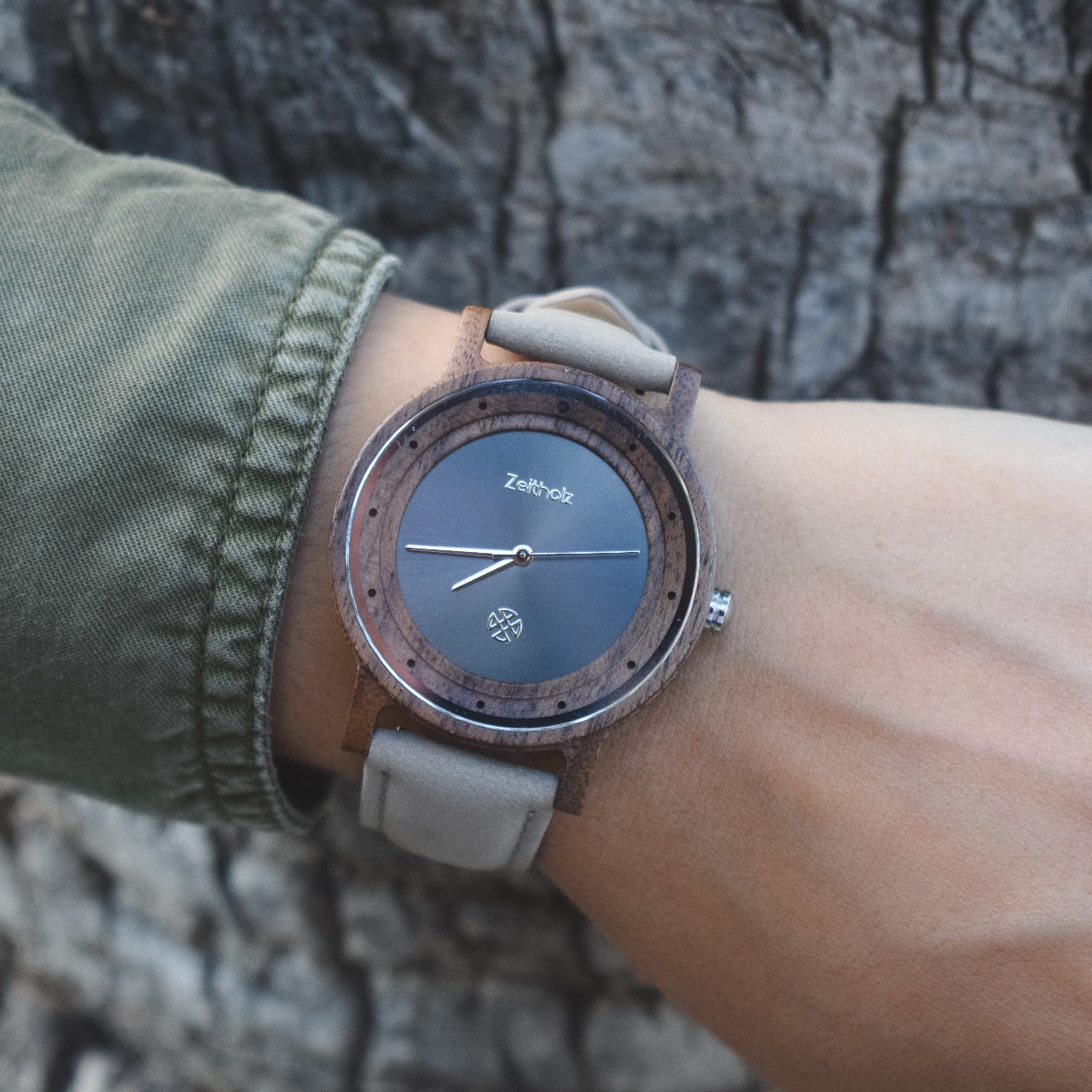Your Cart is Empty
Over 35,000 satisfied customers. 100% money back guarantee. Free delivery.
SPRING SALE: UP TO 30% OFF SITEWIDE
Over 35,000 satisfied customers. 100% money back guarantee. Free delivery.
SPRING SALE: UP TO 30% OFF SITEWIDE
Over 35,000 satisfied customers. 100% money back guarantee. Free delivery.
SPRING SALE: UP TO 30% OFF SITEWIDE

May 27, 2024 5 min read
If you have been checking our wooden watch models for men and women, you may have already seen that all are 3 atm water-resistant. But what does that mean? Does it mean they are waterproof? Can you shower with them? Swim? Dive? Let us explain how water resistance is measured and how it works.
By definition, something that is water-resistant is capable of preventing the ingress of water to some degree, but not entirely.
In our case, a water-resistant watch is a watch that does not stop working when it comes into contact with water (or a water-like liquid). Rain falling on the watch, a splash of water while washing your hands, will not damage the watch. However, the water resistance of your watch does not mean you can dive, swim, or even shower with it without expecting any damage.
Now that the key question has been answered, you may have further questions. In this article, we will explain several concepts related to water resistance in watches.
We want you to know exactly what to expect when you buy one of our watches and to understand these concepts well so that you can choose a product that truly meets your needs.
The most common misconception is the belief that water-resistant and waterproof watches are the same, but this is not the case.
There are no waterproof watches. For a watch to be waterproof, it would have to be completely sealed and protected against the ingress of water under any circumstances. Even in great depths of the ocean.
But watches can be, like ours at Zeitholz Watches, water-resistant. This means that the watch can withstand exposure to water or immersion up to a certain depth or pressure without allowing any water inside.
The standard method for rating water resistance in watches focuses on ATM, bar, and meters. These ratings show how much water pressure a watch can withstand before water enters.
Another way to express water resistance on watch labels is using depth in meters, which specifies the maximum depth the watch can handle under static conditions in a lab, not necessarily under actual swimming or diving movements.
Normally, meters are displayed in blocks of ten, and each ten meters is equivalent to 1 ATM or 1 bar.
Great, now you know the rating system, but "what does 5 ATM water resistance mean"? What exactly can you do and what should you avoid to keep your watch running smoothly?
As you can see, even if a watch is rated at 30 meters, it would not only not withstand diving 20+ meters below water, but swimming is also not recommended. This is the flaw of the rating system and why we wanted to make this article as clear as possible.

Now you know that your 3 ATM Zeitholz Watch will work perfectly even if it rains on it or when you are playing with water pistols with your kids, but please remove it before getting in the shower or doing any sort of water activity, including swimming.
The IP code, also known as the Ingress Protection code, helps measure how well electrical devices like smartphones and lamps are sealed against dirt and water, but it is not commonly used for watches.
While the IP code does rate water resistance (for example, IP67 or IP68), these ratings do not specify the exact water pressure that watches need to handle, like depths or pressures.
Therefore, the IP code is not detailed enough for watches. Instead, watches use ratings like ATM, bar, and meters, which clearly show how much water pressure a watch can withstand, which is important for users to know for activities involving water.
The construction of a water-resistant watch involves meticulous engineering to prevent water from entering the casing. Key components include:
To standardize what water resistance means across the industry, the International Organization for Standardization (ISO) has set forth specific norms:
Our current watch collections are not focused on diving, so neither of these standards relate to us, but we wanted to include them so that you make sure, in case that is what you need, that the watch you buy is going to be up to the standard you look for.
To ensure the longevity of your water-resistant watch, consider these maintenance tips:
Water resistance is a vital feature for many watch wearers, influencing not only the choice of watch but also its care and maintenance. By understanding the various ratings and what they mean for practical use, you can choose a watch that best suits your lifestyle and ensure it lasts for many years.
Always consider water resistance as a significant factor when selecting and caring for your watch, and refer back to this guide whenever you need clarity on the technicalities and practical implications of this essential feature.
If you are now ready to pick your 3-ATM watch, why don’t you check our current offers?
Be the first to know about upcoming sales and special offers. Get a 10% discount coupon when you sign up!